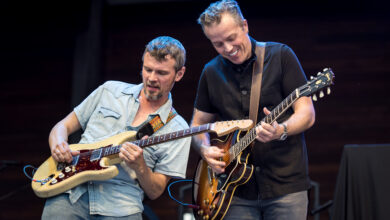Mississippi Blues Trail Series: Piney Woods School
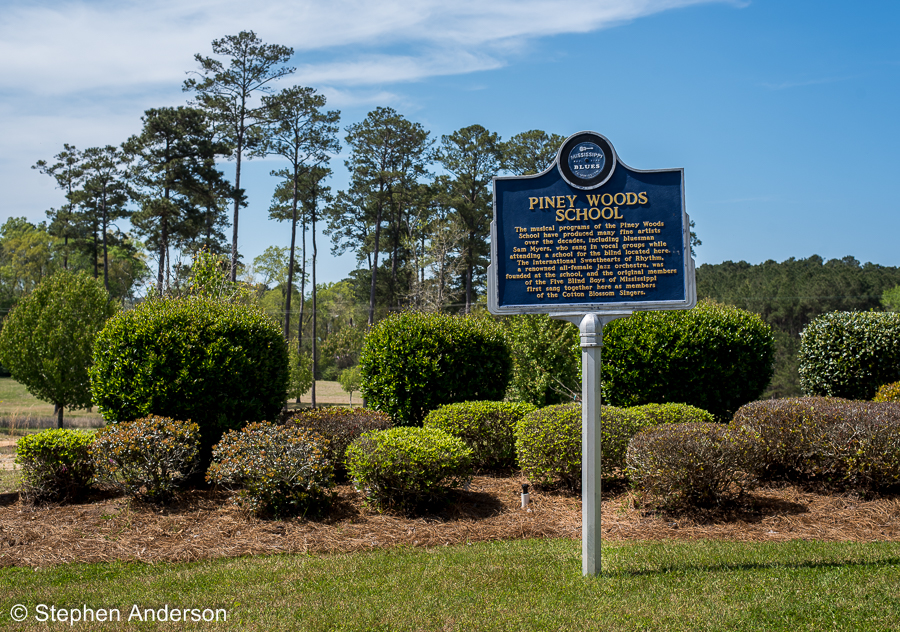 By Deborah Chatham
By Deborah Chatham
Photos by Stephen Anderson
Piney Woods Country Life School, located just 21 miles south of Jackson, Mississippi, hardly sounds like the name of a school based on music education. However, the school boasts a rich, historical connection to the education and development of many notable Mississippi music artists. The founder and first president of Piney Woods School, Laurence C. Jones, envisioned an educational program that emphasized classroom instruction, strict discipline, Christian foundations, and service. In addition, all students were expected to learn practical skills, including farming, hence the inclusion of country life in the school’s name. The most intriguing of Jones’s expectations was that students would also have a music education.
Several years ago, I had the privilege of touring Piney Woods School, as it is affectionately called. The serene, wooded setting of this private boarding school provides a quiet, slower-paced environment for students to pursue educational goals. Many skill learning opportunities are undertaken in functional and outdoor settings that make learning more relevant to students. The school is self-sufficient and boasts a farm, post office, and chapel, as well as athletics and a performance amphitheater. Jones founded the school in 1909 and added the Mississippi School of the Blind for Negroes around 1920. A decade later the name was changed to Mississippi Blind School for Negroes. Piney Woods is one of only four remaining African-American boarding schools for high school students still in existence in the United States and in 2020 was placed on the National Register of Historic Places.
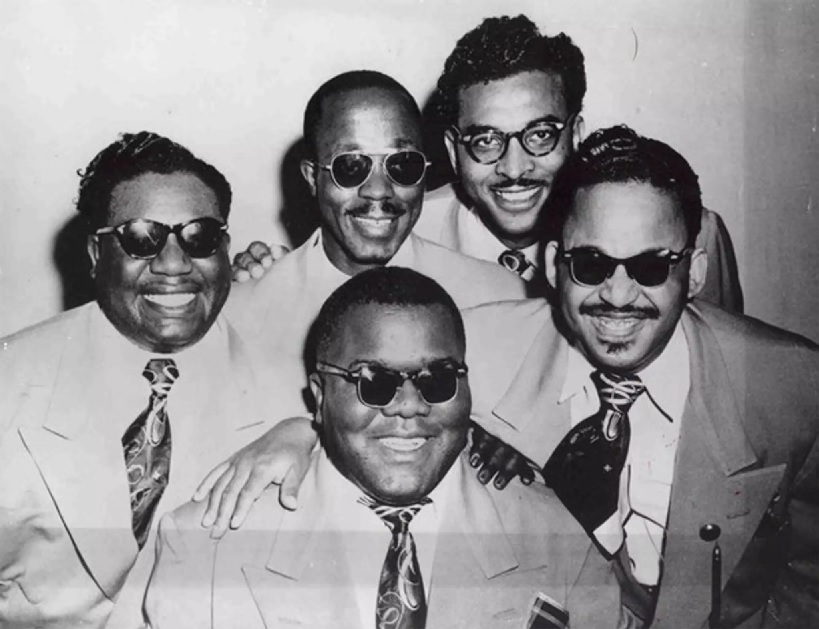 Top Photo:: Mississippi Blues Trail marker honoring the Piney Woods Country Life School, located just 21 miles south of Jackson, Mississippi (photo by Stephen Anderson); Above photo: Five Blind Boys of Mississippi, originally The Cotton Blossom Singers, was the first group to form at the school (photo courtesy of the National Museum of American History)
Top Photo:: Mississippi Blues Trail marker honoring the Piney Woods Country Life School, located just 21 miles south of Jackson, Mississippi (photo by Stephen Anderson); Above photo: Five Blind Boys of Mississippi, originally The Cotton Blossom Singers, was the first group to form at the school (photo courtesy of the National Museum of American History)
The motto for Piney Woods, “Head, Heart, and Hands,” is reflected in the school’s mission for students to be prepared mentally, emotionally, and physically for challenges in the world. Funded by donations and endowments, the school has an enrollment of between 250 – 300 high school students and has produced such notable music artists, as the Five Blind Boys of Mississippi (originally known as the Cotton Blossom Singers), the all-male group, Syncollegians, and the all-female group, International Sweethearts of Rhythm.
The Cotton Blossom Singers was the first group to form at Piney Woods School. They started as a jubilee quartet who participated in fundraising efforts to support the school. This group later went on to become the Five Blind Boys of Mississippi and developed a signature gospel sound known as hard gospel that included moans and wails. This sound influenced Ray Charles, James Brown, and Wilson Pickett. Although the group had a variety of singers rotate through, Archie Brownlee was the original lead singer and longest member of the band. John Fogerty has claimed that the line “Rollin’, rollin’, rollin’ on the river,” from the Song Proud Mary was intended to evoke the sound of gospel quartets like the Five Blind Boys.
 International Sweethearts of Rhythm (photo courtesy of the National Museum of American History)
International Sweethearts of Rhythm (photo courtesy of the National Museum of American History)
The Sweethearts of Rhythm, the first female group, became known as the International Sweethearts of Rhythm when they discovered that some of their members were of different heritages including, Chinese, Hawaiian, and Mexican. The Sweethearts initially performed as a jazz band that backed the Cotton Blossom Singers but later went on to become one of the most popular female groups during World War II, while so many of their male counterparts were serving in the war. They left Piney Woods School after only a couple of years to become professionals but were replaced by the Junior Sweethearts of Rhythm, students who had been understudies for the band.
Despite the passage of time and changes in educational techniques, Piney Woods Country Life School has stayed true to the original goal of providing secondary education to African-American students with an emphasis on service, values, self-sufficiency, and a well-rounded educational program. Because of the vision of Laurence C. Jones, music education has remained a core part of the curriculum. In 2008 Piney Woods School was recognized for its historic and continuing contribution to American music with a Mississippi Blues Trail Marker.
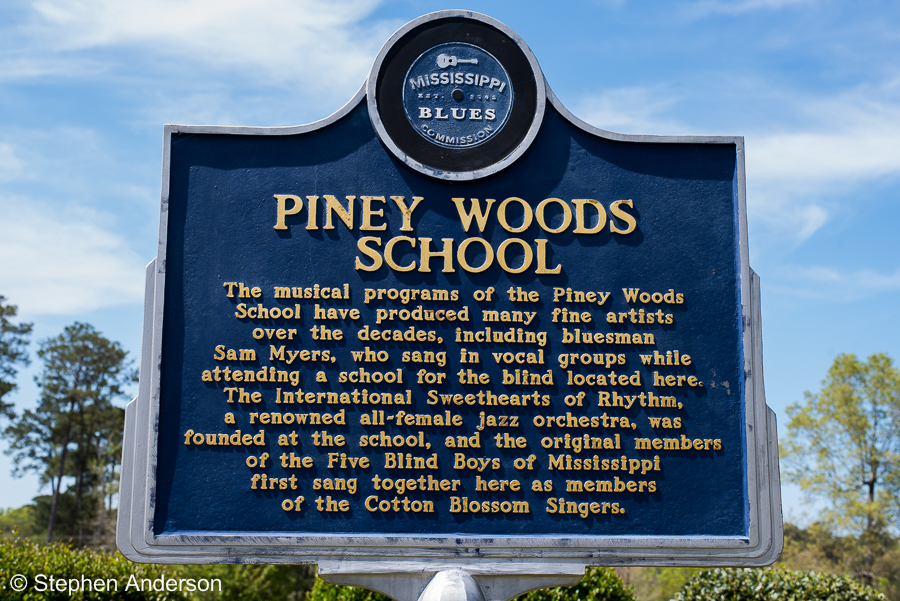 Mississippi Blues Trail marker honoring the Piney Woods School (front side of marker)
Mississippi Blues Trail marker honoring the Piney Woods School (front side of marker)
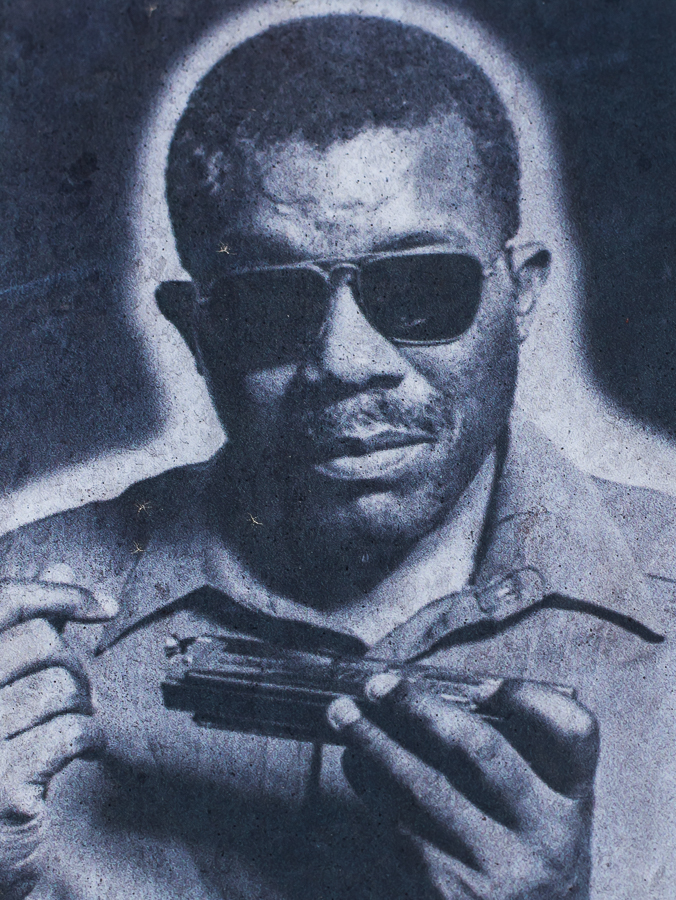 The musical programs of the Piney Woods School have produced many fine artists over the decades, including bluesman Sam Myers, who sang in vocal groups while attending a school for the blind located at Piney Woods. (photo courtesy of Erroll Dillon)
The musical programs of the Piney Woods School have produced many fine artists over the decades, including bluesman Sam Myers, who sang in vocal groups while attending a school for the blind located at Piney Woods. (photo courtesy of Erroll Dillon)
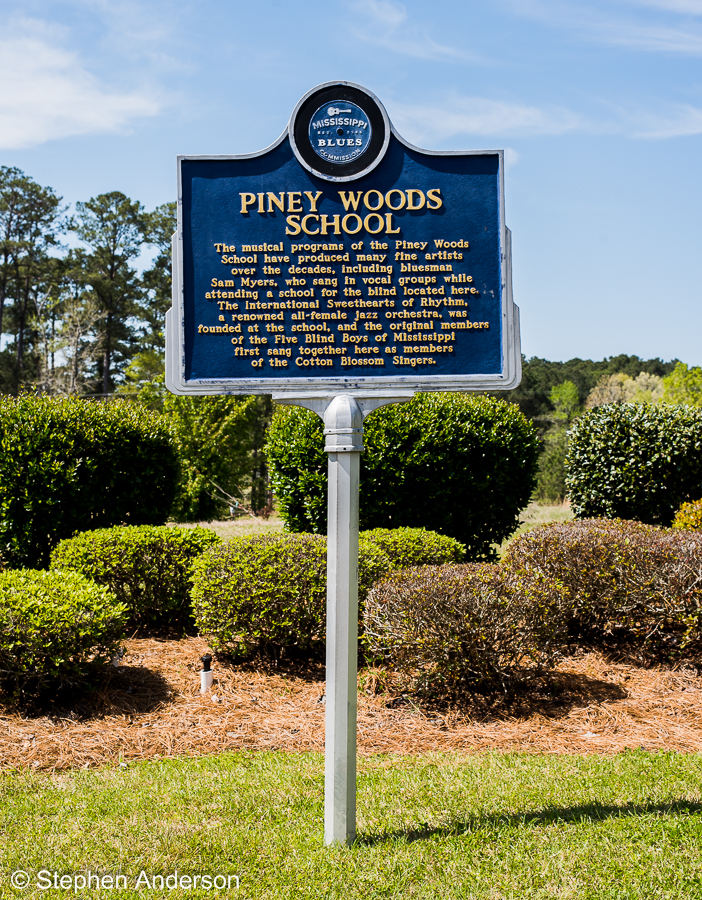 Mississippi Blues Trail marker honoring the Piney Woods School (front side of marker)
Mississippi Blues Trail marker honoring the Piney Woods School (front side of marker)
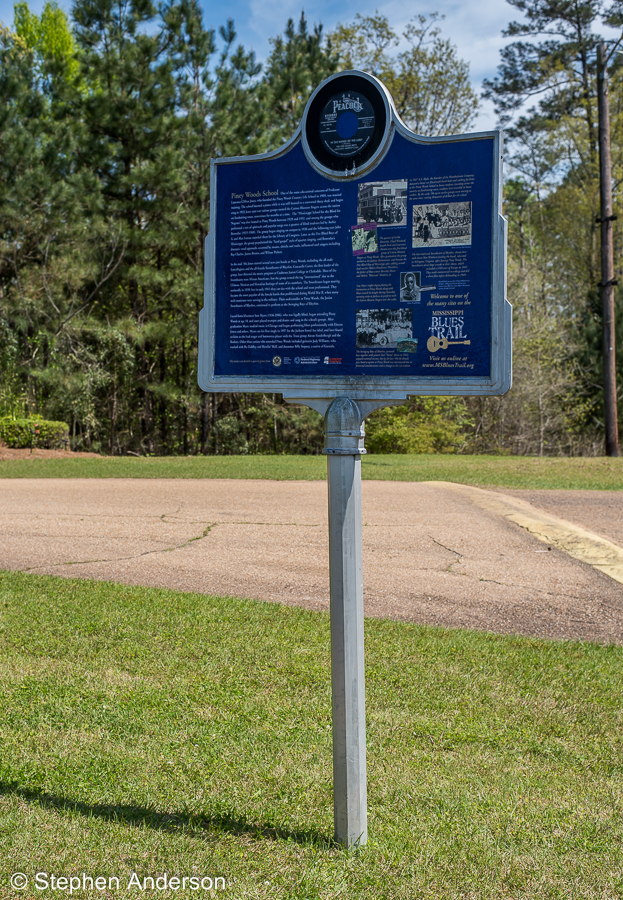 Mississippi Blues Trail marker honoring the Piney Woods School (back side of marker)
Mississippi Blues Trail marker honoring the Piney Woods School (back side of marker)
Click Here for Other Articles in our Mississippi Blues Trail Series.
References:
1. Mississippi Blues Trail official website.
2. National Museum of American History
3. Mississippi Encyclopedia, Laurence Clifton Jones
4. Wikipedia, Five Blind Boys of Mississippi
5. Wikipedia, Piney Woods Country Life School
Page Designed & Edited by Johnny Cole
© The Southland Music Line. 2023.
All rights reserved

COPYRIGHT NOTICE: We welcome requests for permission to use content from The Southland Music Line website and Facebook page. Any shared articles or photos may not be altered, edited nor cropped and must include the appropriate copyrights of The Southland Music Line.




